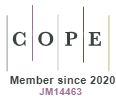Objeto de aprendizagem para o ensino de algoritmos para solução do problema de caminho mínimo
DOI:
https://doi.org/10.5585/exactaep.2022.22247Palavras-chave:
objeto de aprendizagem, problema do caminho do mínimo, algoritmos de busca, otimização em rede, JUNGResumo
Embora o uso das novas tecnologias seja reconhecido e amplamente explorado na literatura recente como uma importante alternativa para o aprendizado de conceitos teóricos e práticos nas áreas de Engenharia e Informática, há ainda muito espaço para novas ferramentas computacionais, principalmente no que tange a visualização de algoritmos de otimização em redes. Neste trabalho é apresentado um objeto de aprendizagem computacional para auxiliar a compreensão dos alunos sobre o funcionamento de algoritmos para solução do problema de caminho mínimo (PCM), os quais são comumente ensinados em cursos de graduação como Engenharia de Produção, Ciência da Computação e Sistemas de Informação. O objeto proposto possui uma interface gráfica interativa, que emprega recursos da biblioteca JUNG (Java Universal Network/Graph), e permite ao aluno representar e resolver o problema investigado, além de demonstrar como cada um dos algoritmos disponíveis (Dijkstra, A* e Greedy Search) resolve o problema. Experimentos realizados com alunos do curso de Ciência da Computação sinalizaram que o objeto de aprendizagem pode trazer benefícios para a aprendizagem, considerando a necessidade de conhecimentos teóricos acerca do PCM.
Downloads
Referências
Abduraxmanova, S. A. (2022). Individualization of professional education process on the basis of digital technologies. World Bulletin of Social Sciences, 8, 65-67.
Araújo, S. A., de Barros, D. F., da Silva, E. M., & Cardoso, M. V. (2019). Applying computational intelligence techniques to improve the decision making of business game players. Soft Computing, 23(18), 8753-8763.
Arenales, M., Armentano, V. A., Morabito, R., & Yanasse, H. H. (2007). Pesquisa operacional: modelagem e algoritmos. Campus-ABEPRO, Rio de Janeiro, Elsevier.
Balsmeier, B., & Woerter, M. (2019). Is this time different? How digitalization influences job creation and destruction. Research policy, 48(8), 103765.
Barros, E. A., Pamboukian, S. V., & Zamboni, L. C. (2007, March). Algoritmo de Dijkstra: Apoio didático e multidisciplinar na implementação, simulação e utilização computacional. In International Conference on Engineering and Computer Education–ICECE, São Paulo–SP.
Borissova, D., & Mustakerov, I. (2015). E-learning tool for visualization of shortest paths algorithms. Trends Journal of Sciences Research, 2(3), 84-89.
Cormen, T. H., Leiserson, C. E., Rivest, R. L., & Stein, C. (2009). Introduction to Algorithms. third. New York.
Estevez, J., Garate, G., Guede, J. M., & Graña, M. (2019). Using Scratch to Teach Undergraduate Students' Skills on Artificial Intelligence. arXiv preprint arXiv:1904.00296.
Guzmán, J. L., & Joseph, B. (2021). Web-based virtual lab for learning design, operation, control, and optimization of an anaerobic digestion process. Journal of Science Education and Technology, 30(3), 319-330.
IEEE Learning Technology Standards Committee. (2005). WG12: Learning object metadata. URL: http://ltsc. ieee. org/wg12.
Keller, C. (2009). User acceptance of virtual learning environments: a case study from three northern European universities. Communications of the Association for Information Systems, 25(1), 38.
Kostadinov, B., Thiel, J., & Singh, S. (2019). Creating Dynamic Documents with R and Python as a Computational and Visualization Tool for Teaching Differential Equations. PRIMUS, 29(6), 584-605.
Kumawat, S., Dudeja, C., & Kumar, P. (2021). An Extensive Review of Shortest Path Problem Solving Algorithms. In 2021 5th International Conference on Intelligent Computing and Control Systems (ICICCS) (pp. 176-184). IEEE.
Lockwood, E. (2022). Leveraging Prediction and Reflection in a Computational Setting to Enrich Undergraduate Students’ Combinatorial Thinking. Cognition and Instruction, 1-43.
Malik, R. S. (2018). Educational challenges in 21st century and sustainable development. Journal of Sustainable Development Education and Research, 2(1), 9-20.
Martin, J., & Bohuslava, J. (2018, January). Augmented reality as an instrument for teaching industrial automation. In 2018 Cybernetics & Informatics (K&I) (pp. 1-5). IEEE.
Mun, Y. Y., & Hwang, Y. (2003). Predicting the use of web-based information systems: self-efficacy, enjoyment, learning goal orientation, and the technology acceptance model. International journal of human-computer studies, 59(4), 431-449.
Oliveira, I. C. B. Estímulo da leitura com a utilização de recursos multimodais e tecnológicos. Anais IV CONEDU... Campina Grande: Realize Editora, 2017. Disponível em: <https://editorarealize.com.br/artigo/visualizar/36864>. Acesso em: 19/05/2017.
Paula, L. D., Piva Jr, D., & Freitas, R. L. (2009). A Importância da Leitura e da Abstração do Problema no processo de formação do raciocínio lógico-abstrato em alunos de Computação. In XVII Workshop sobre Educação em Computação-WEI.
Platz, M., Krieger, M., Niehaus, E., & Winter, K. (2017, May). Electronic proofs in mathematics education—A South African Teacher Professional Development (TPD) course informing the conceptualisation of an e-proof system authoring support workshop. In 2017 IST-Africa Week Conference (IST-Africa) (pp. 1-9). IEEE.
Ramle, R., Nathan, S. S., & Berahim, M. (2020). Question-led approach in designing Dijkstra algorithm game-based learning: A pilot study. International Journal of Evaluation and Research in Education, 9(4), 926-933.
Russell, S., & Norvig, P. (1995). Prentice Hall series in artificial intelligence. Englewood Cliffs, NJ:: Prentice Hall.
Santos, M. P. (2015). Pesquisa Operacional, Departamento de Matemática Aplicada Instituto de Matemática e Estatística, Universidade do Estado do Rio de Janeiro. Disponível em: https://www.mpsantos.com.br/Po%20Python.pdf. Acessado em: Dez. 2015.
Sánchez, D. S., Feijoo, J. M., Cueto-Felgueroso, L., Rodrigo, B. G., Guerra, F. S., & Carrasco, I. C. (2018). A framework for boosting the autonomous and experiential learning for undergraduate engineering students under blended learning. In ICERI2018 Proceedings (pp. 9808-9815).
Yadav, N., Dhameja, K., & Chaubey, P. (2021, December). Path Finding Visualizer Application for Shortest Path Algorithm. In 2021 3rd International Conference on Advances in Computing, Communication Control and Networking (ICAC3N) (pp. 1669-1672). IEEE.
Downloads
Publicado
Como Citar
Edição
Seção
Licença
Copyright (c) 2022 Wilson da Silva Lourenço, Wonder Alexandre Luz Alves, Stanley Jefferson de Araujo Lima, Sidnei Alves de Araujo

Este trabalho está licenciado sob uma licença Creative Commons Attribution-NonCommercial-ShareAlike 4.0 International License.
- Resumo 316
- pdf 59






